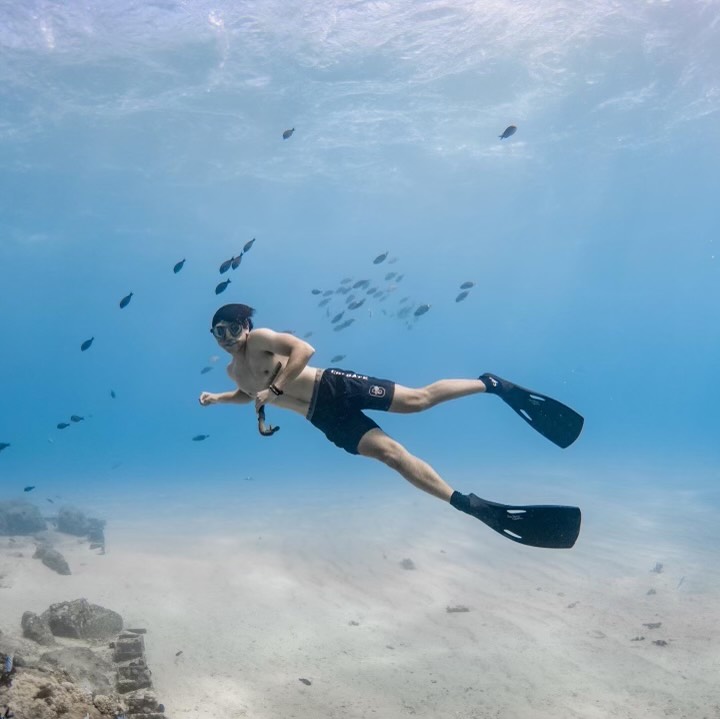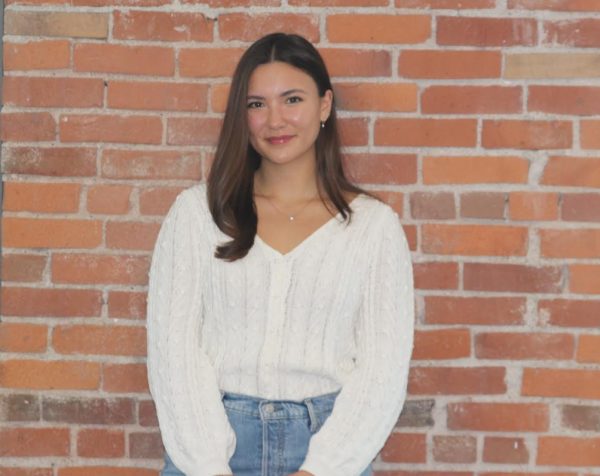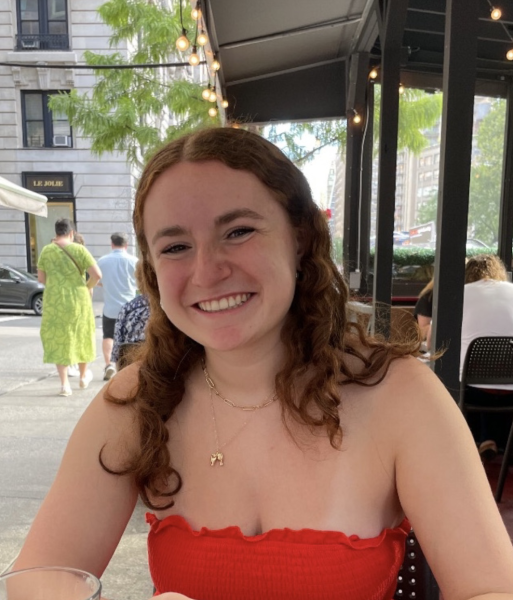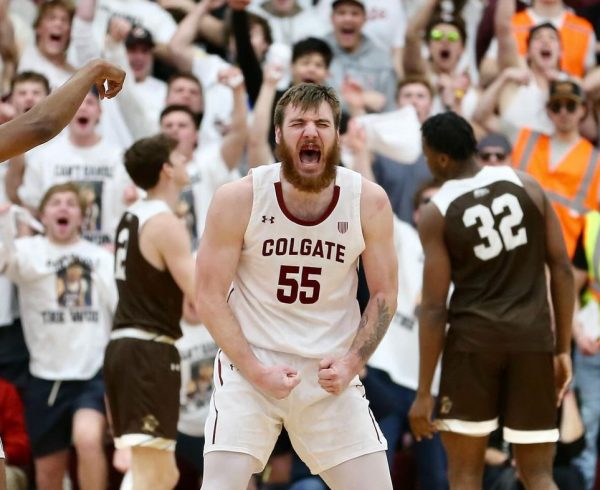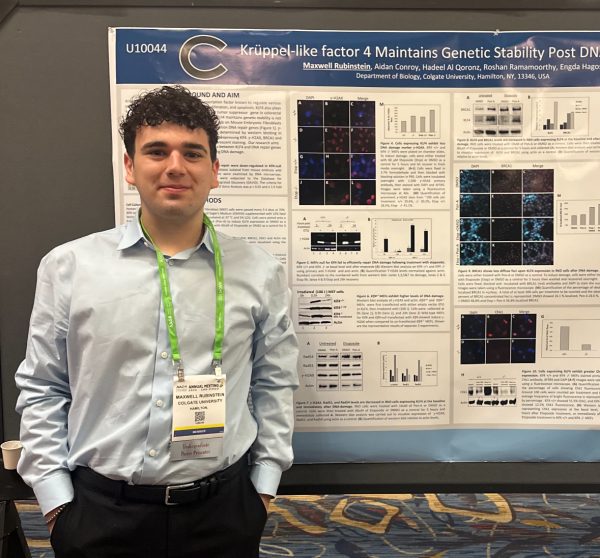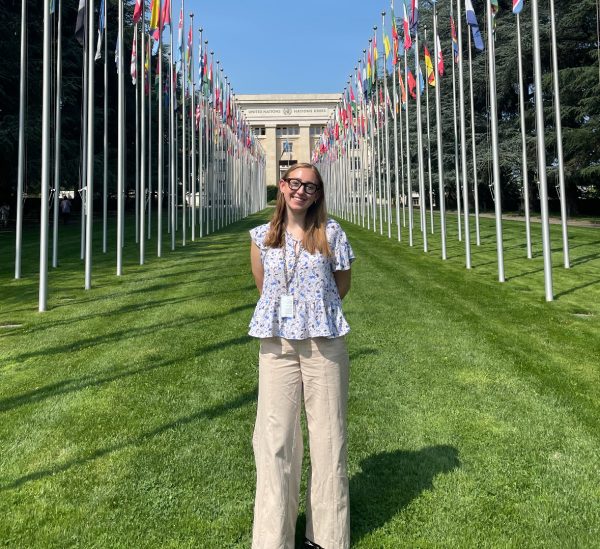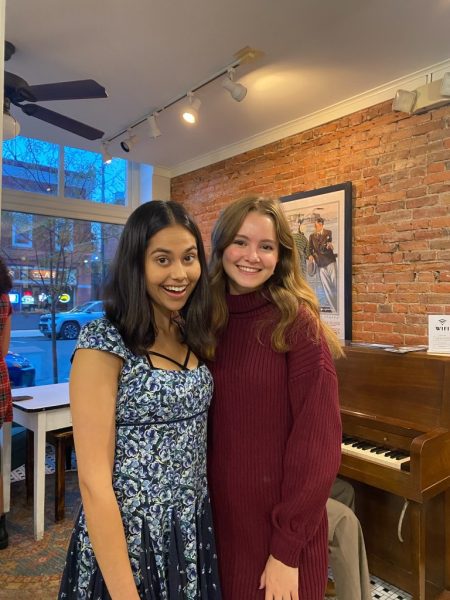River’s Island Immersion: Marine Biology in Hawaii
Surrounded by coconut and mango trees and the vast marine life of the Pacific Ocean, senior River Corrado found a new home in Oahu, Hawaii this summer. Living in a small military family community, Corrado commuted from Kaneohe to a tiny island called Coconut Island each day, where he was able to fully appreciate the diversity and beauty of the environment around him.
As a marine and freshwater science concentrator, Corrado is required to participate in fieldwork. With support from his academic advisor — Professor of Geology Amy Leventer — as well as guidance from Professor of Biology Damhnait McHugh, Corrado reached out to the principal investigator (PI) at the Hawaii Institute of Marine Biology to apply for a summer position as a research assistant. His passion for marine biodiversity and motivation to protect endangered animals helped him secure a spot in the lab, so he packed his bags and prepared for two months in Hawaii.
Corrado spent June and July conducting acoustic analysis of endangered Hawaiian monk seals. Acoustic analysis is the measurement of sound waves through varying frequencies, amplitudes and durations. The lab deployed around four or five sound traps over 50 days in 2020 and 2021 to analyze the effects of anthropogenic noise from boats or planes on the efficacy of communication between seals and other marine animals. Corrado was responsible for collecting data from the sound traps and utilizing various auditory and visualization cues on the screen’s spectrogram to identify various monk seal calls.
“There are five Hawaiian monk seal calls: growl, groan, moan, whoop and rumble,” Corrado explained.
Once the type of monk seal call or anthropogenic noise was identified from the sound trap data, Corrado recorded the sound type into a spreadsheet. While anthropogenic noise may not be the only factor contributing to the Hawaiian monk seal’s endangerment, recording and identifying these marine sounds allows researchers to raise awareness about the problem and help mitigate its harmful effects.
“I think the analysis of the monk seal calls was probably the hardest part of my internship, but also the most rewarding,” Corrado said. “I would go into the office for around eight hours and probably would get through only about three hours of recorded calls. It took a while, but after it was done, it was very rewarding and satisfying.”
Corrado also participated in more hands-on field research, conducting spinner dolphin surveys using photo identification. Traveling up and down the West coast of Oahu by boat, Corrado worked with researchers to find pods of dolphins. Around 500 photos were taken in about 30 minutes, with the researchers looking to capture individual dorsal fins.
“Each dorsal fin has a different mark on it. If you get a good picture of the dorsal fin, you can put it in this database called Fluke Book to trace the fin and identify which dolphin it is,” Corrado explained.
Based on how many times a dolphin is photographed, Corrado and the team of researchers were able to estimate the abundance of dolphins in the area.
“I really enjoyed this part of the internship because I was able to see the same dolphin over and over again, but weeks apart. There was one called Hole Punch that had a hole in its fin, which was very distinctive. I even got to name one; I named him ‘Karate Kid’ because it’s a little dolphin that had a dorsal fin that was cut in half,” Corrado explained enthusiastically.
The last component of Corrado’s experience in Hawaii included working with a group of local high school students. Corrado, along with the doctoral students in the lab, designed activities for the student to learn about marine mammal research. They ran a modified version of what the doctoral students do in the lab and took part in a hands-on lab environment, while also learning from various researchers from outside the lab who came to speak with students about their specific field of research.
“I learned so much from this experience and it helped me throughout the rest of my internship in the lab as well,” Corrado said.
When looking into the future and post-grad opportunities, Corrado reflected on his summer research experience at the Hawaii Institute of Marine Biology.
“I am on the premed track [at Colgate], but this summer totally changed my mindset. Now I am in between going to medical school and doing research with marine mammals, or also potentially pursuing a veterinary degree,” he said.
His experience in Hawaii was a niche opportunity for him to explore his interests and take what he has learned in the labs here at Colgate to the Pacific waters of Hawaii.


